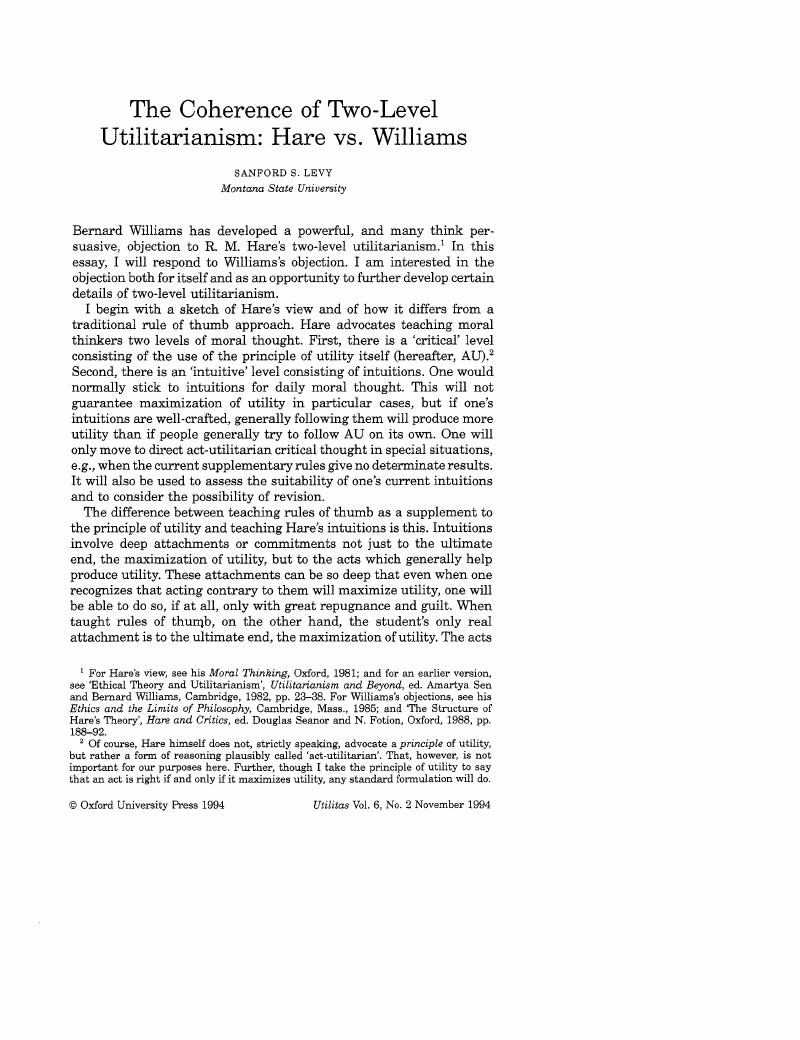Article contents
The Coherence of Two-Level Utilitarianism: Hare vs. Williams
Published online by Cambridge University Press: 26 January 2009
Abstract

- Type
- Discussion
- Information
- Copyright
- Copyright © Cambridge University Press 1994
References
1 For Hare's view, see his Moral Thinking, Oxford, 1981Google Scholar; and for an earlier version, see ‘Ethical Theory and Utilitarianism”, Utilitarianism and Beyond, ed. Sen, Amartya and Williams, Bernard, Cambridge, 1982, pp. 23–38CrossRefGoogle Scholar. For Williams's objections, see his Ethics and the Limits of Philosophy, Cambridge, Mass., 1985Google Scholar; and ‘The Structure of Hare's Theory”, Hare and Critics, ed. Seanor, Douglas and Fotion, N., Oxford, 1988, pp. 188–92.Google Scholar
2 Of course, Hare himself does not, strictly speaking, advocate a principle of utility, but rather a form of reasoning plausibly called ‘act-utilitarian”. That, however, is not important for our purposes here. Further, though I take the principle of utility to say that an act is right if and only if it maximizes utility, any standard formulation will do.
3 One view of this kind says that the mere fact that we are dealing with a two-level system solves the problem by in some way keeping the contradiction away from the attention of the person. For example, one could argue that critical and intuitive thinking are separated in time and that the agent is only vividly aware of one half the contradiction when engaged in intuitive thinking and of the other half when engaged in critical thinking. The two halves never come together vividly in consciousness. If this can be made to work, it is a sort of mystification.
4 See Moral Thinking, pp. 36–8Google Scholar and ‘Comments”, in Hare and Critics, pp. 289–90.Google Scholar
5 Though I only talk about tastes, everything I say holds for distastes as well.
- 1
- Cited by




